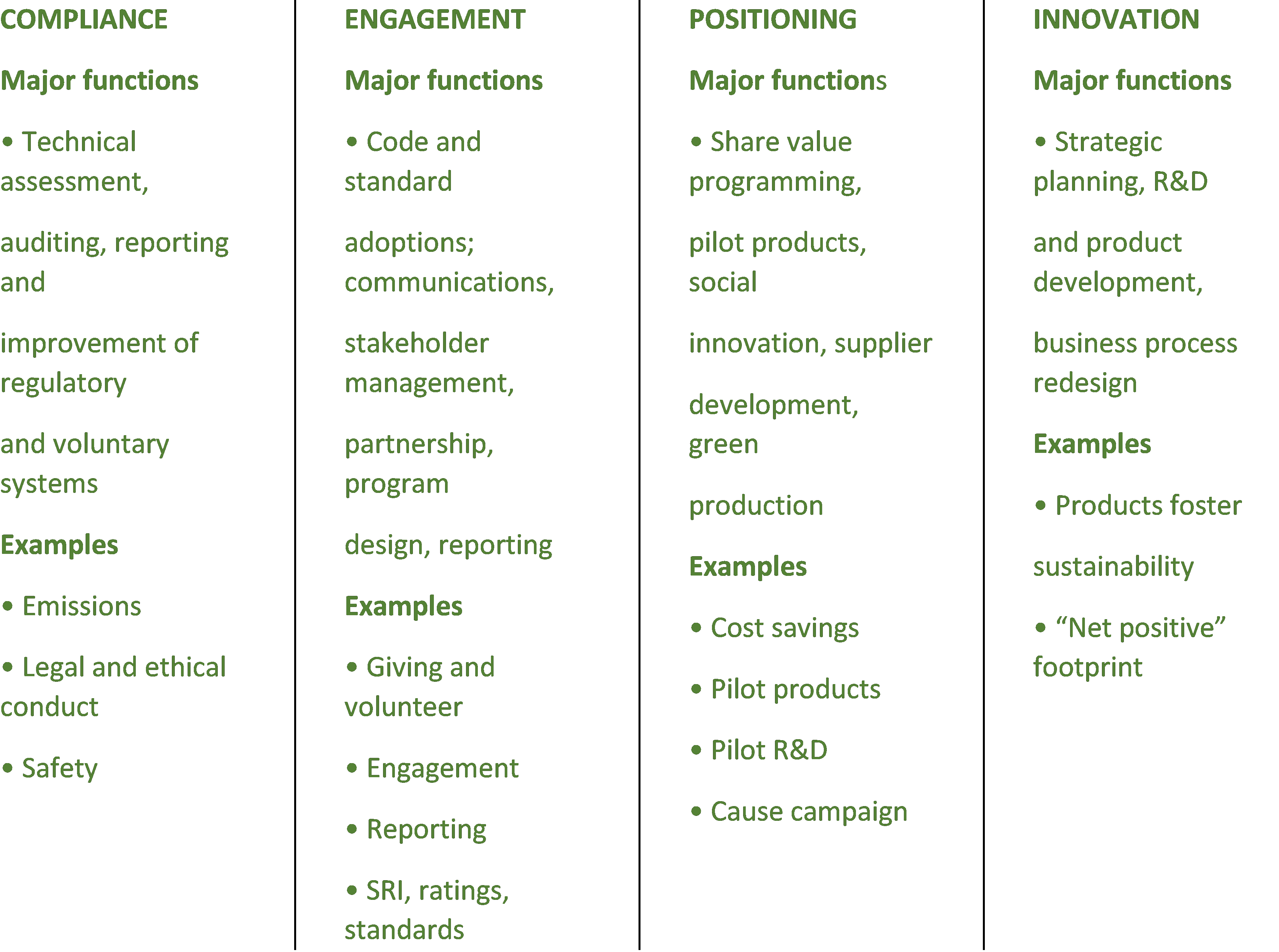Corporate Social Responsibility, the idea that corporations should provide value for all stakeholders - customers, employees, suppliers and the local community - began taking shape in the 1980s.
Companies started to understand that their customers and employees expected them to demonstrate good corporate citizenship and moving forward without a CSR plan would be a costly mistake.
Tried and True – Corporate Social Responsibility Gains Momentum
The idea of corporate social responsibility originally dates back to the 1800s (Industrial Revolution), when business owners began to show concern for worker well-being and productivity. At the time, it was a concept without a name.
Then in 1953, Academic Howard Bowen coined the phrase Corporate Social Responsibility(CSR) and described it as "the obligations of businessmen to pursue those policies, to make those decisions, or to follow those lines of action which are desirable in terms of the objectives and values of our society."
From 1953 to the1980s, Corporate Social Responsibility was a work in progress. During that time, governments and organizations realized companies functioned and existed because of public consent, so they were obligated to contribute to society.
The 1980s and 90s saw stakeholders becoming responsive to the idea that a company was investing in them, and Corporate Social Responsibility became widely accepted.
Recent events have put many organizations in the spotlight, and consumers expect companies to do their part in taking up the cause. The CSR models from the 1990s offered the basic framework to create a program but have since evolved to meet a broader range of public demands.
In fact, without a CSR policy, brands will struggle because seventy percent of Americans believe it's either "somewhat" or "very important" for companies to make the world a better place. (2019 Aflac CSR Survey)
.jpg?width=1080&name=2022%20HR%20Trends%20LP%20Image%20(2).jpg)
Corporate Social Responsibility – Do Stakeholders Notice?
A long-standing question as to whether corporate environmental, social, and governance practices drive or distract from financial, competitive, and other business performance has been debated but not answered until 2015.
In 2015 Verizon and Campbell sponsored Project ROI, a thorough study designed to answer that very question. The researchers noted that CSR practices did have the potential to deliver ROI returns if the CSR activities were done well and the intent was sincere.
Companies that embrace and remain true to their moral convictions can position themselves favorably in the eyes of consumers and investors. Harvard Business School reported on several interesting statistics, such as consumers would remain loyal to a brand if it practiced social responsibility.
The bottom line? 73% of millennial consumers are willing to spend more on a product if it comes from a sustainable brand, and 87% would stay loyal to the brand because it advocated for an issue they cared about.
(Harvard Business School)
It is increasingly important for companies to have a socially conscious image. Consumers, employees and other stakeholders prioritize CSR when choosing a brand or a company, and consumers are holding them accountable for effecting change with their social position.
Any combination of the following can drive sales and reputation value.
• Building awareness
• Reflecting the customer's values
• Creating a pathway from guilt to pride
• Differentiation
• Engaging customers directly in CR activities
• Enhancing the following reputation drivers:
- Perceptions of a company's citizenship
- Governance
- Workplace practices
Companies following these socially responsible policies can look forward to higher returns related to:
• Share price and market value
• Sales and revenue
• Reputation and brand identity
Other key benefits include the company's positive impact on the community, better employee morale and reduced employee turnover.
What is Corporate Social Responsibility?
There are four interchangeable terms used when discussing corporate responsibility.
1. Environment, Social and Governance (ESG)
2. Corporate Responsibility (CR)
3. Sustainability
4. Corporate Social Responsibility (CSR)
Each term has a slightly different definition, but all fall somewhere on the spectrum of a corporate responsibility program that encompasses:
-
-
Environmental Responsibility
-
Philanthropic Responsibility
-
Ethical Responsibility
-
Economic Responsibility
-
And each is designed to do the following:
• Reduce the corporate footprint - Companies should make efforts to reduce the detrimental impacts in their environmental, social, economic, and governance categories, including corporate action and company behavior.
• Enhance solutions that will improve social, economic, and governance conditions - Also known as the corporate handprint, refers to practices that range from investments to improve social and economic conditions to research and development to community engagement and development.
• Be Transparent in disclosing and reporting CSR performance
• Determine the company's accountability - The reported success or failure of the company's process to manage and implement CSR practices.
As humdrum as all this seems, if a company wants to profit in the modern world, it must invest in and maintain its CSR program. If the company isn't relevant and doesn't show it cares about issues its stakeholders care about, it will fail.
Project ROI broke CSR into the following categories, Compliance, Environment, Competitive Reasoning, Innovation and Transformation.
The following table is their example of how these four categories are organized into a workstream.

Human Resources and CSR – Should I Stay or Should I Go?
Who do the best workers want to work? They want to work for a company that cares about its employees. Today's employees want to feel a sense of purpose and fulfillment from their work, and they want to feel pride in the job they do and the company that hires them.
They want to work for a company that will prioritize their well-being by offering benefits such as a relaxed work environment, personal days off, mental health care and space for employees to do their best work.
These offers show employees that their health and well-being are a priority for the people who also give them their paycheck.
A CSR program can benefit itself, the employees and the customers who deal with those happy employees.
Almost ninety percent of employees who work for companies with a strong sense of purpose say they are more inspired, motivated and loyal. They believe their work has a lasting impact on something they care about.
"In addition, employee engagement links to CR in a virtuous cycle. Together they reinforce one another and enhance financial performance, sales revenue, brand and reputation value, and innovative capability" (Project ROI)
Even a small investment in CSR can translate to significant employee engagement, consumer buy-in and a thriving community.
When you partner with Ulliance, our Life Advisor Consultants are always just a phone call away to teach ways to enhance your work/life balance and increase your happiness. The Ulliance Life Advisor Employee Assistance Program can help employees and employers come closer to a state of total well-being.
Investing in the right EAP or Wellness Program to support your employees will help them and help you. Visit www.ulliance.com, or call 866-648-8326.
The Ulliance Employee Assistance Program can address the
following issues:
• Stress about work or job performance
• Crisis in the workplace
• Conflict resolution at work or in one’s personal life
• Marital or relationship problems
• Child or elder care concerns
• Financial worries
• Mental health problems
• Alcohol/substance abuse
• Grief
• Interpersonal conflicts
• AND MORE!
References
: Steve Rochlin, R. B. (2015). Project ROIDefi ning the Competitive and Financial Advantages of Corporate. Retrieved from Babson PDF: https://www.ctphilanthropy.org/sites/default/files/resources/Project-ROI-Report.pdf
Aflac. (2019). Consumers, Investors Hold. Retrieved from Aflac PDF: https://www.aflac.com/docs/about-aflac/csr-survey-assets/2019-aflac-csr-infographic-and-survey.pdf
O'Connell, B. B. (2020, Januaru 4). A New Era in Corporate Responsibility. Retrieved from SHRM Better Workplaces Better Worls : https://www.shrm.org/hr-today/news/all-things-work/pages/a-new-era-in-corporate-responsibility.aspx
Schooley, S. (2021, Dec 16). What Is Corporate Social Responsibility? Retrieved from Business News Daily: https://www.businessnewsdaily.com/4679-corporate-social-responsibility.html
Stobierski, T. (2021, April 8). TYPES OF CORPORATE SOCIAL RESPONSIBILITY TO BE AWARE OF. Retrieved from Harvard Business School : https://online.hbs.edu/blog/post/types-of-corporate-social-responsibility

